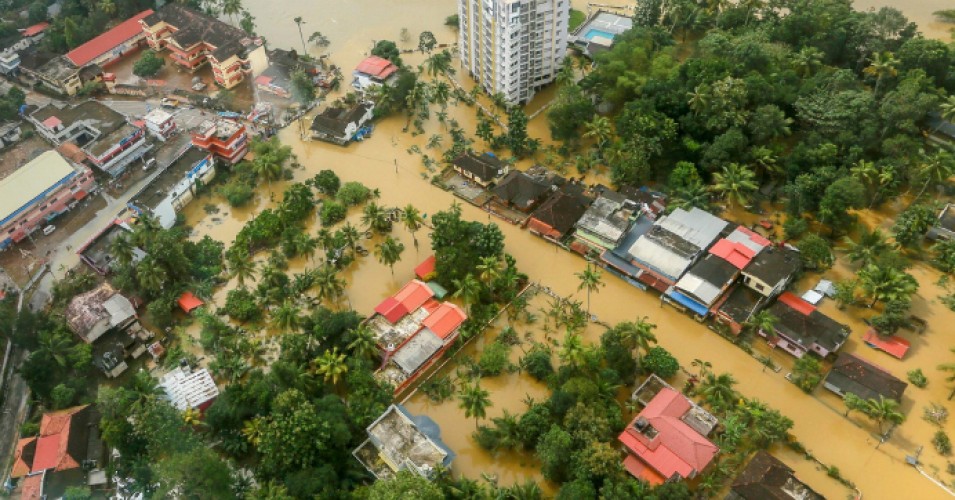
Flooding from monsoon rains has killed hundreds of people in India’s Southern coastal state of Kerala in recent days. (Photo: NDTV/Twitter)
“This is #climatechange, and the time to act on it is now.”
By Jessica Corbett / 08.20.2018
A new climate study out Monday in Nature warns that “accelerated warming in the Arctic” is stalling summer weather over North America, Europe, and Asia, and could lead to a future of even more “very-extreme extremes,” including dangerous heat waves and flooding.
“Giant airstreams encircle our globe in the upper troposphere—we call them planetary waves. Now evidence is mounting that humanity is messing with these enormous winds,” explained co-author Hans Joachim Schellnhuber, director of Potsdam Institute for Climate Impact Research (PIK). “Fueled by human-made greenhouse-gas emissions, global warming is probably distorting the natural patterns.”
As the study outlines, greenhouse gas emissions are causing rapidly rising near-surface temperatures in the Arctic, which are increasing two-to-four times faster than the rest of the globe. While past studies have focused on how this phenomenon, called Arctic amplification (AA), impacts mid-latitude winters, this research team focused on summers.
“This summer was where we saw a very strong intensity of heat waves. It’ll continue and that’s very worrying, especially in the mid-latitudes: the E.U., U.S., Russia, and China,” study co-author Dim Coumou of PIK told the Guardian, warning about the impacts on agricultural production and human health.
The study’s publication follows a series of devastating wildfires in Sweden, Greece, and California—where fires continue to force evacuations—and fatal flooding on India’s Southern coast, where monsoon rains have just begun to ease. The recent extreme weather across the globe had caused climate experts to issue calls to actions and warnings about what’s to come.
Greenpeace, responding to the report, concluded on Twitter, “This is #climatechange, and the time to act on it is now.”
Rising temperatures mean that sunny days could become heatwaves and rain is more likely to turn into flooding.
This is #climatechange, and the time to act on it is now. https://t.co/wNcmXnaRkJ
— Greenpeace (@Greenpeace) August 20, 2018
Since the temperature gradient between the Arctic and the equator drives the planetary waves eastward, as the Arctic temperature falls, the winds “slow down so the weather in a given region gets stuck,” Schellnhuber explained. “Rains can grow into floods, sunny days into heat waves, and tinder-dry conditions into wildfires.”
“While it might not sound so bad to have more prolonged sunny episodes in summer,” Coumou added in a statement, “this is in fact a major climate risk.”
“Besides Arctic warming, there’s also the possibility of climate-change-induced shifting of the storm tracks, as well as changes in the tropical monsoons,” noted co-author Simon Wang from Utah State University. “Under global warming, the Indian summer monsoon rainfall will likely intensify and this will also influence the global airstreams and might ultimately contribute to more stalling weather patterns.”
Originally published by Common Dreams under the terms of a Creative Commons Attribution-Share Alike 3.0 license.

